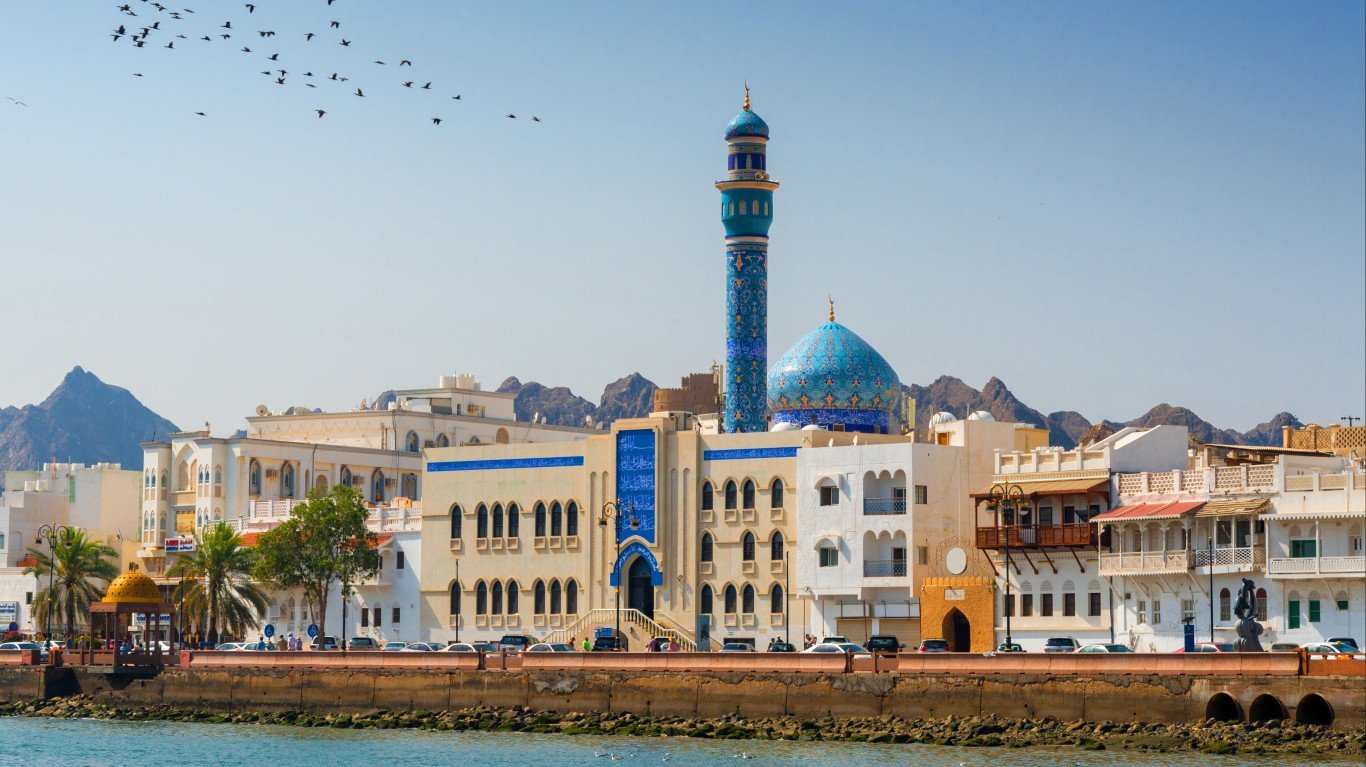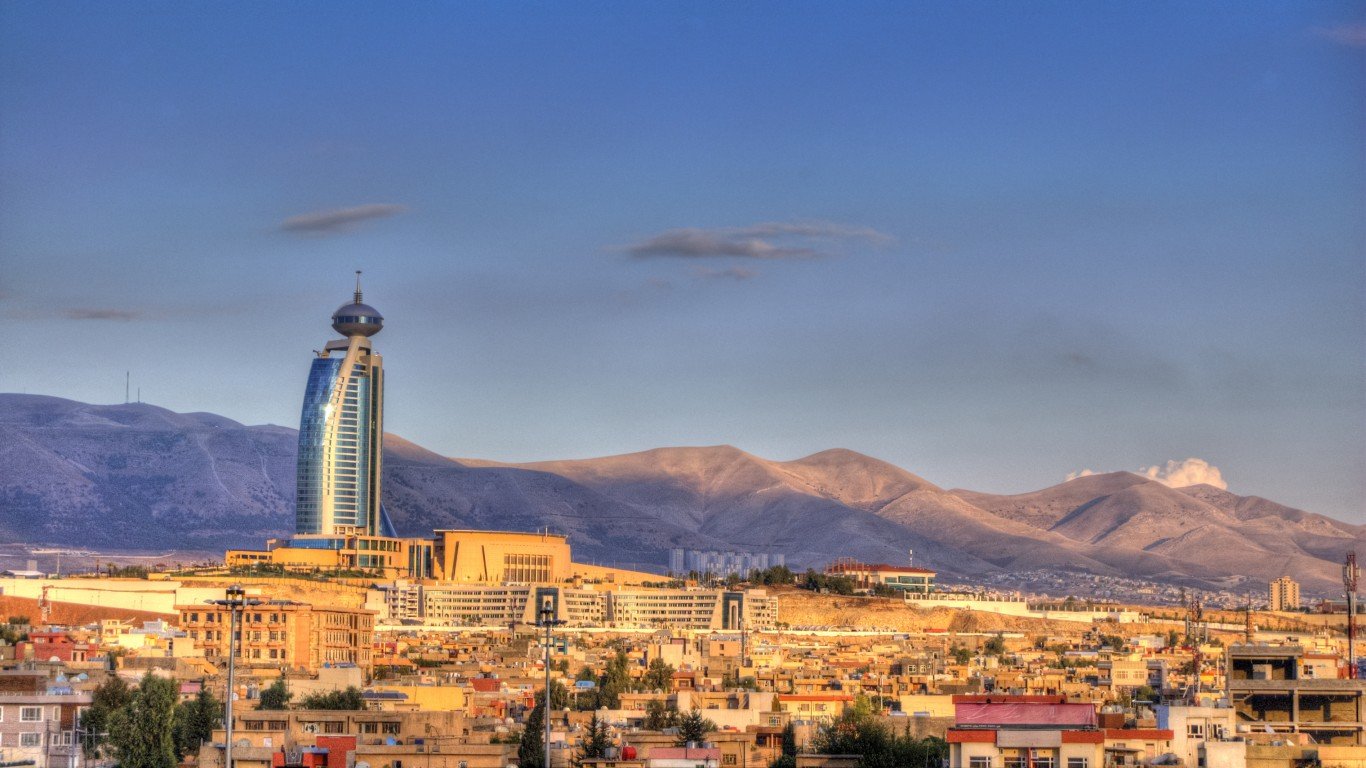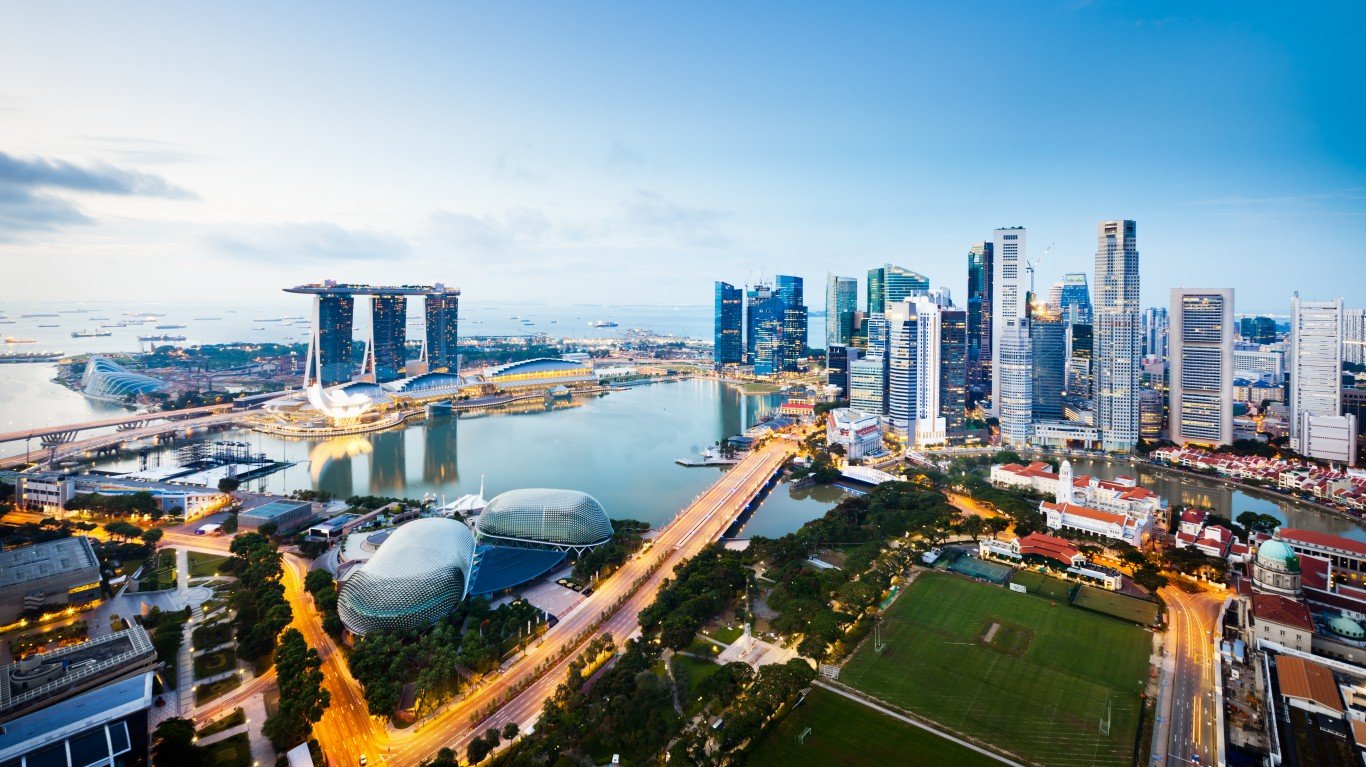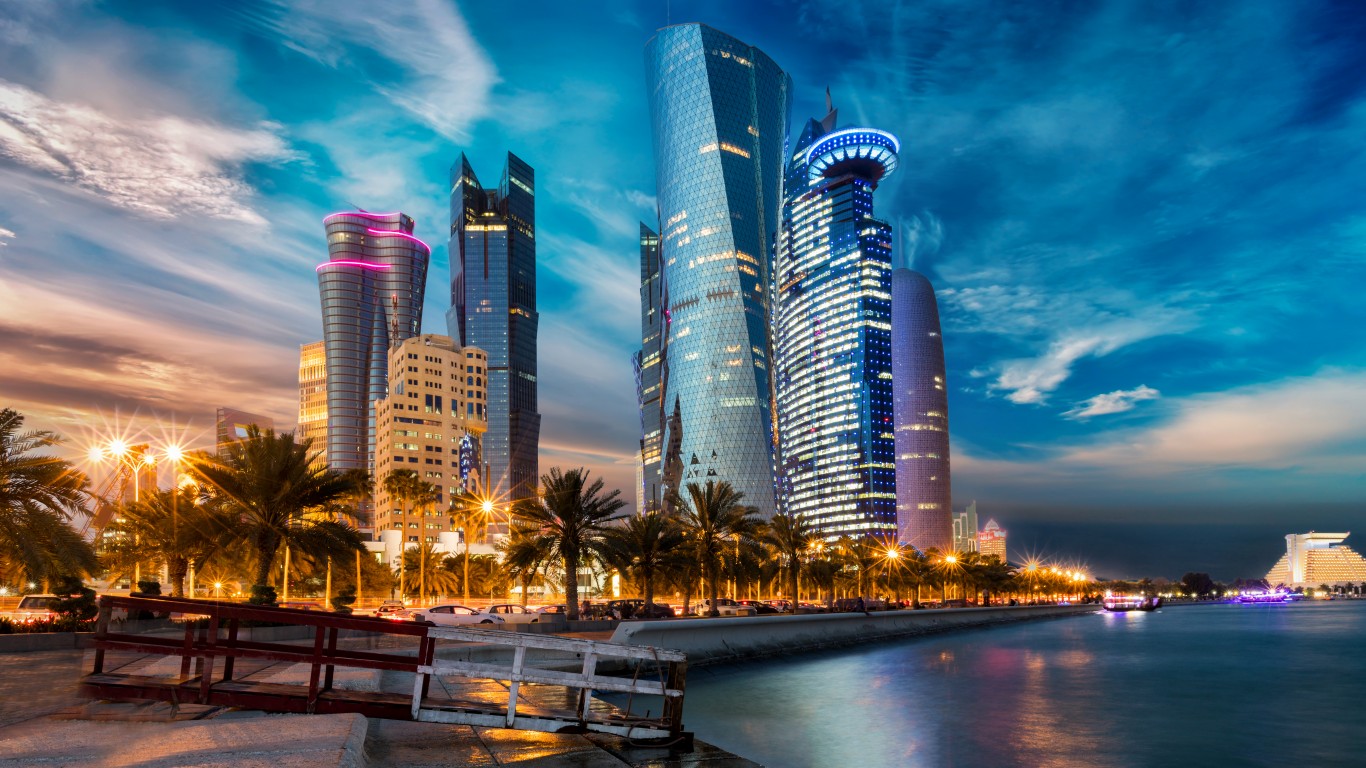
15. Oman
> Value of oil trade: 13.4% of GDP
> Oil exports, 2020: $20.2 billion
> Oil imports, 2020: $1.0 billion
> GDP, 2020: $158.9 billion
> Total population: 5.1 million
Oman has been producing oil since 1967 and is capable of pumping 1 million barrels a day. Oman exports most of its oil to China, the world’s largest oil importer. The government gets about 70% of its annual budget from oil and gas revenue. State-owned Petroleum Development Oman holds most of the nation’s oil reserves and is Oman’s largest oil and gas operator. Occidental Petroleum of the United States is the second-largest operator in Oman. The leading three exports of Oman are crude petroleum, petroleum gas, and refined petroleum.

14. Iraq
> Value of oil trade: 13.8% of GDP
> Oil exports, 2020: $50.0 billion
> Oil imports, 2020: $2.7 billion
> GDP, 2020: $382.4 billion
> Total population: 40.2 million
Iraq’s oil minister Ihsan Abdul-Jabbar said in a statement Friday that the nation can guarantee crude-oil exports of more than 3.3 million barrels per day from its southern locations. The second-biggest manufacturer of oil in OPEC aims to leverage higher energy costs to help its economy. Oil revenue is critical for Iraq as it rebuilds its economy. The Ministry of Oil reported that March crude-oil exports climbed to more than 3.24 million barrels per day, with revenue totaling $11.7 billion, the highest since 1972. Iraq’s leading export is crude petroleum.

13. Singapore
> Value of oil trade: 14.1% of GDP
> Oil exports, 2020: $30.9 billion
> Oil imports, 2020: $47.9 billion
> GDP, 2020: $560.2 billion
> Total population: 5.7 million
Singapore is one of the most important shipping centers in Asia and one of the world’s top oil- trading and refining hubs, with a total crude oil refining capacity of 1.5 million barrels per day. Refined petroleum is its second-biggest export and import. The economy is heavily dependent on exports, and petroleum products are one of its main exports. Refined petroleum is the second-largest export and import in Singapore.

12. Qatar
> Value of oil trade: 14.9% of GDP
> Oil exports, 2020: $38.3 billion
> Oil imports, 2020: $367.7 million
> GDP, 2020: $259.2 billion
> Total population: 2.9 million
The market for oil and gas in Qatar is expected to grow at an annual rate of more than 1% during the five-year forecast period ended 2025. Most of Qatar’s oil- and gas-producing fields are in the Persian Gulf. Petroleum gas, crude petroleum, and refined petroleum are the country’s main exports. In December, the country announced it was basing its 2022 fiscal budget on an average oil price estimate of $55 a barrel, up from $40 in 2021. West Texas Intermediate crude-oil futures were trading $94.07 on April 11. The top three exports of Qatar are petroleum gas, crude petroleum, and refined petroleum.

11. Tuvalu
> Value of oil trade: 17.3% of GDP
> Oil exports, 2020: $150
> Oil imports, 2020: $9.5 million
> GDP, 2020: $54.9 million
> Total population: 11,792
Tuvalu is an island nation in the Polynesian section of Oceania in the Pacific Ocean. The country lacks proven oil reserves, and its economy is very vulnerable to oil price shocks. In a Reuters story in 2012, Tuvalu ran afoul of the U.S. government when Iran, seeking to evade U.S. sanctions, reflagged its oil tankers under the Tuvalu flag. Refined petroleum is the third-biggest import in Tuvalu.






